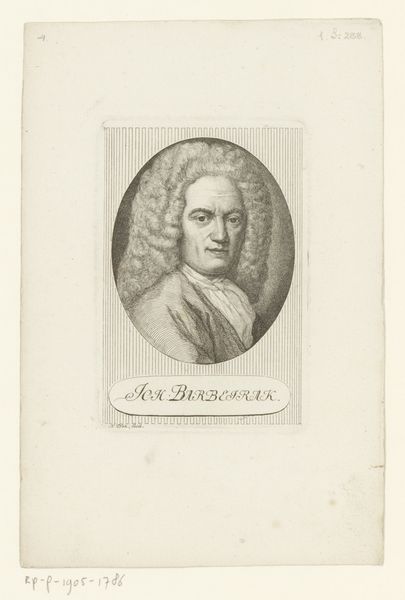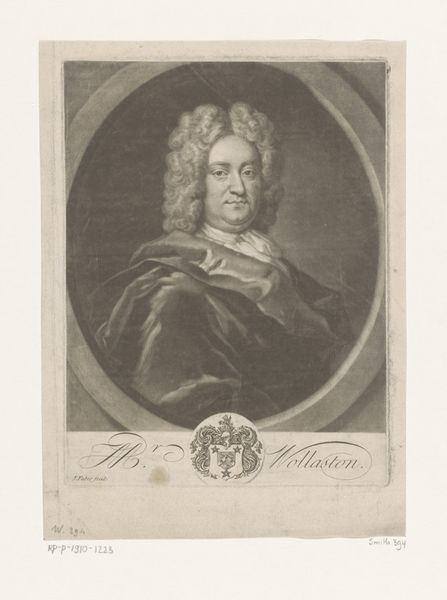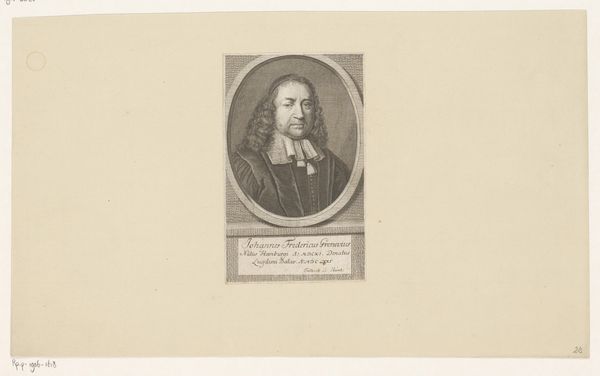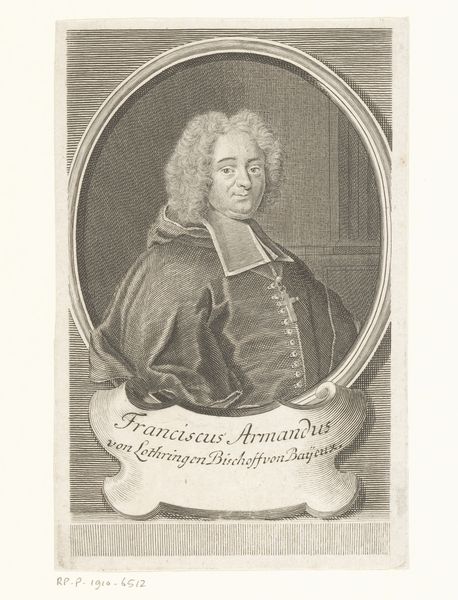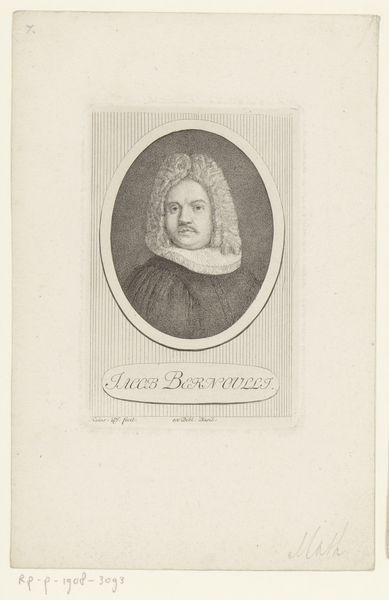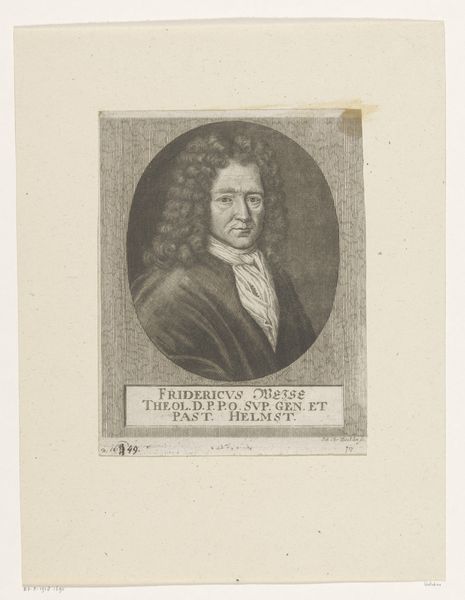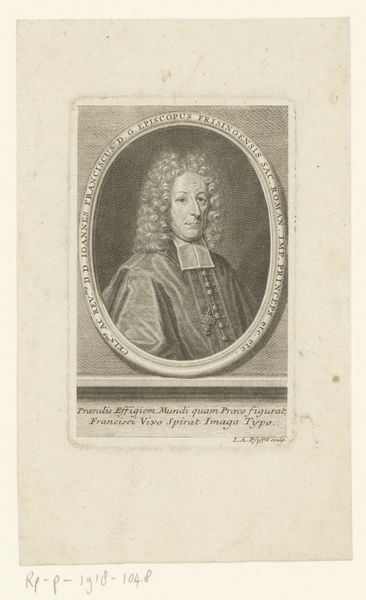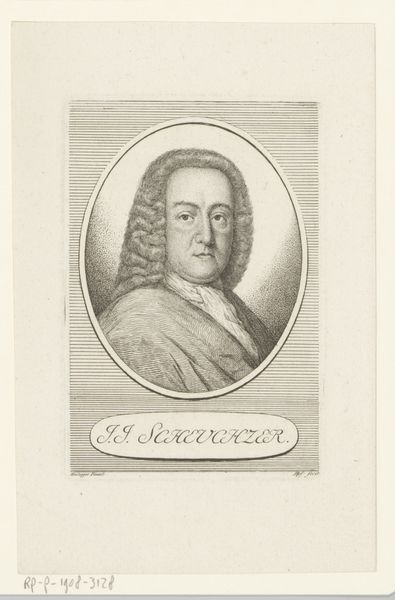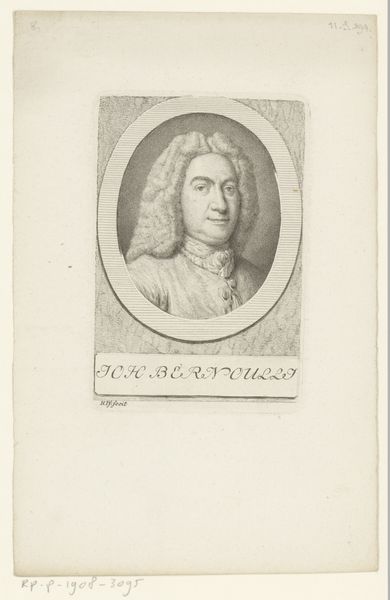
Dimensions: height 124 mm, width 85 mm
Copyright: Rijks Museum: Open Domain
Heinrich Pfenninger made this engraving, a "Portret van Johann Conrad Brunner," sometime around the turn of the 19th century. As an engraving, it involves cutting lines into a metal plate, applying ink, and using a press to transfer the image onto paper. Consider the labor involved here. The engraver uses specialized tools to meticulously carve lines, relying on skill and precision. The density and direction of these lines create the illusion of light, shadow, and texture. The result is a striking likeness, capturing Brunner's likeness with remarkable detail, from the elaborate wig to the subtle expression on his face. But the print also speaks to broader social and economic conditions. Engravings like this one were often used for reproduction and dissemination of images. They played a crucial role in spreading knowledge and shaping public opinion. The fact that this portrait was made as an engraving suggests the desire to circulate Brunner's image more widely. By understanding the materials, processes, and social context of this work, we can appreciate its full significance.
Comments
No comments
Be the first to comment and join the conversation on the ultimate creative platform.
